
Discover the Tambopata Amazon Wildlife, in the department of Madre de Dios, is located one of the greatest natural treasures of Peru: the Tambopata National Reserve. With an extensive area of great biological richness, its purpose is to protect the multiple species of flora and fauna, as well as to provide resources to the native communities that inhabit it and to safeguard the beauty of the tropical sub-humid forest.
The Tambopata National Reserve was founded in 2000 and has a huge size of 274,690 hectares, in addition to being home to incredible biodiversity. The reserve has more than 550 identified bird species (eg macaws, hoatzins), around 200 mammals (eg 200 different amphibians and reptiles (eg tree frogs, rainbow boa), thousands of insects, and more than 10,000 plants and trees identified.
Visiting this reserve will always be a special experience not only for being a tourist place, but also for its immense value in generating environmental awareness and for being an opportunity for the visitor to connect with nature and all its benefits. In Tambopata you can navigate on rivers and lakes, observe reptiles in the light of the moon, discover the Collpas frequented by birds and climb to the top of the trees to observe all the spectacle that this ecological wonder offers.
Tambopata is divided into six zones, of which two are for tourist and recreational use, located along the Malinowsky and Tambopata rivers. There you will be able to contemplate charming attractions like collpas -in Quechua ‘salty land’- or clay benches located on the banks of rivers, where macaws and various species of parrots feed on mineral salts. This richness of nutrients makes them a key site within the ecosystem.


The lowland forests and tropical savannahs of Tambopata are some of the most biodiverse areas on the globe.
Birds: 670 bird species have been identified, including the Harpy Eagle, a large, rare raptor that preys on monkeys and sloths, the strange Hoatzin, and eight macaw species (six of which can be seen at the Tambopata Research Center clay lick).
Mammals: 200 species, including healthy populations of Jaguar, Giant Anteater, Amazonian Tapir, and, in the savannah habitats of the Rio Heath, the Maned Wolf.
Reptiles and Amphibians: 210 species, including several species of tree frogs, the colorful Tambopata Poison Frog, and the beautiful Rainbow Boa.
Insects and other arthropods: The number of species of insects and spiders that live in the rainforests of Tambopata number in the thousands. Many are expected to be species unknown to science.
Trees and plants: Over 10,000 species of plants have been identified in Tambopata, Peru, making it one of the highest areas for plant diversity on the planet. A few of the more noteworthy plants are the Brazil Nut Tree, the huge Ceiba, and quick-growing Balsa trees.
Tambopata National Reserve is a protected section of the Amazon Rainforest in southern Peru. Tambopata is a fraction of one of the largest sections of continuous tropical forest and is full of wildlife. On guided expeditions into this area of the Amazon, you will find fascinating diversity of animals and plants, which we will mention a little later. But to give a summary, Tambopata wildlife you’re likely to see on Amazon tours include different monkeys, fascinating reptiles, many different birds, and much more.
The Tambopata National Reserve is accessed from the dusty town of Puerto Maldonado, just a short flight south of Cusco. You can be in this incredible reserve in around 30 minutes. Being so close to incredibly biodiverse forest means this is a great Amazon destinations for short tours of 2 or 3 days. With so much rainforest home to all the iconic Amazon animals, it’s also a great place for deep Amazon adventures. To help give examples of wildlife you’re likely to see, we will go over these below.
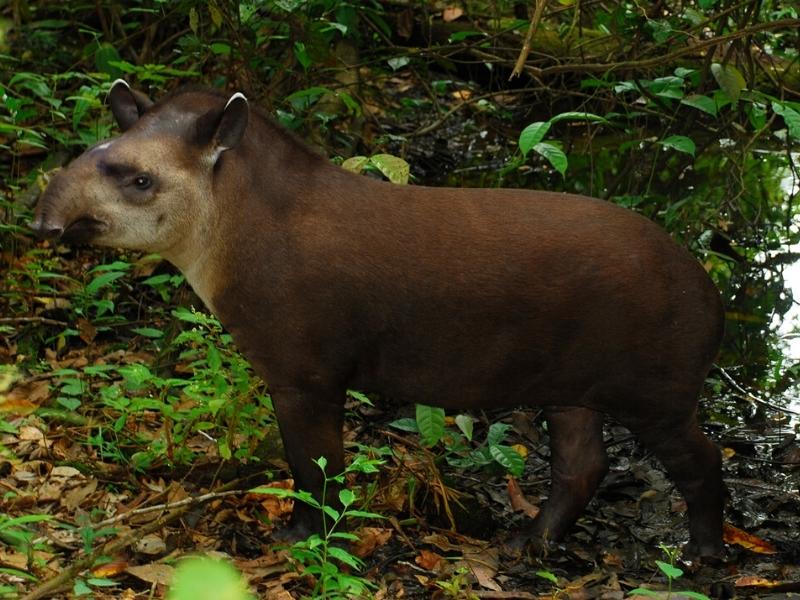
The South American tapir (Tapirus terrestris), also commonly called the Amazonian tapir, and in mixed Quechua and Spanish Sachavaca, is one of the five species in the tapir family. The South American tapir is the largest surviving native terrestrial mammal in the Amazon.
Is an excellent swimmer and diver, but also moves quickly on land, even over rugged, mountainous terrain: It has a life span of approximately 25 to 30 years. In the wild, its main predators are crocodilians (only the black caiman and Orinoco crocodile, the latter of which is critically endangered, are large enough to take these tapirs and large cats, such as the jaguar and cougar, which often attack tapirs at night when tapirs leave the water and sleep on the riverbank. The South American tapir is also attacked by the green anaconda (Eunectes murinus).
Is an herbivore: Using its mobile nose, it feeds on leaves, buds, shoots, and small branches it tears from trees, fruit, grasses, and aquatic plants. This is known because the diet is studied through observation of browsing, analysis of feces, and studying stomach contents.
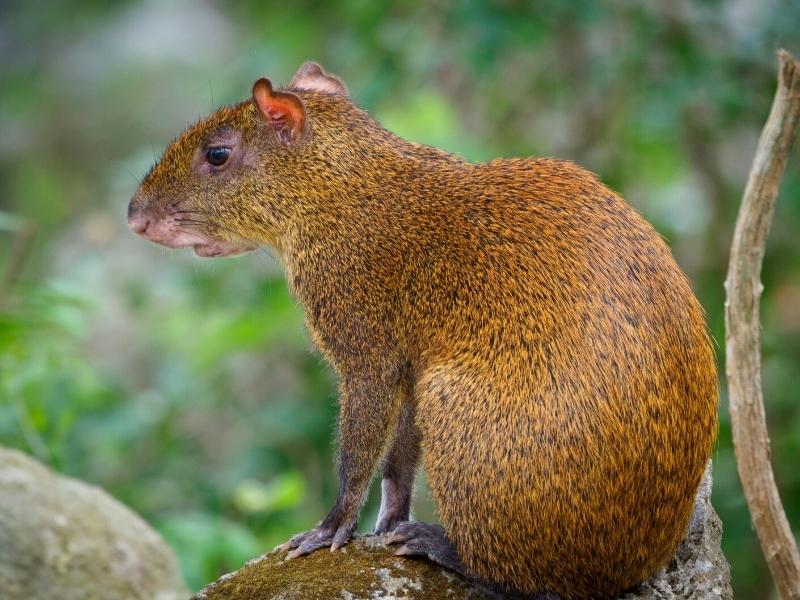
The Agouti is a common mammal from the Amazon rainforest. The species that live in the Tambopata rainforest, home to our lodges, is the Central American Agouti (Dasyprocta punctata).
Agoutis are common in the rainforests of Tambopata and elsewhere. Visitors encounter them a lot because they often forage during the day. They are not as shy of people as other animals. They look like an oversized guinea pig crossed with a squirrel. Agoutis are rodents adapted to foraging for seeds on the forest floor.
They prefer to stay in the shade of the forest understory but they will take to the water to avoid predators. They can run long distances as fast as a rabbit. Agoutis also give a loud, “honking” alarm call when startled.
Eats Brazil nuts: The agouti opens a Brazil nut seed pod without tools. First, they gnaw on the seed pod with strong, sharp incisors. Then they remove and eat a few of the Brazil nuts inside. The only other animal capable of opening a Brazil Nut seed pod is the Red and Green Macaw.
“Agouti” colored fur: The fur of agouti has different shades of brown depending on the angle of the light. Each hair has bands of both light and dark colors with a black tip. Such a color pattern is “agouti” in other mammals. The gene which produces this property in mammal fur is the “agouti” gene.

The Anhinga (Anhinga anhinga) is one of the most often sighted aquatic bird species in the Tambopata jungle, along with kingfishers and herons. However, Anhinga occurs in naturally low numbers. They are a large and long-tailed birds with a neck like a needle. Anhinga needs open areas of water to fish. Therefore, you never find them in small, shaded creeks that flow through the Amazon jungle.
You can recognize Anhingas by their thin neck, sharp, needle-like bill, and long, barred tail. It shares the same habitat with the similar Neotropic Cormorant. Tell them apart by a long tail, pointed bill, and plumage (partly brown in young birds, silvery feathers on the backs of adults). Anhingas are excellent swimmers. They paddle beneath the surface of the water with webbed feet as they search for fish. Anhingas catch their prey with a stab of their sharp beak. They spend the rest of their time with wings partly open, perched on branches or snags that stick out of the water.
“Snakebird”: The word “Anhinga” comes from the Tupi language and means, “Snakebird”. The reason for this name is immediately apparent as soon as one watches an Anhinga swimming through the water with just its serpentine neck and head sticking above the surface.
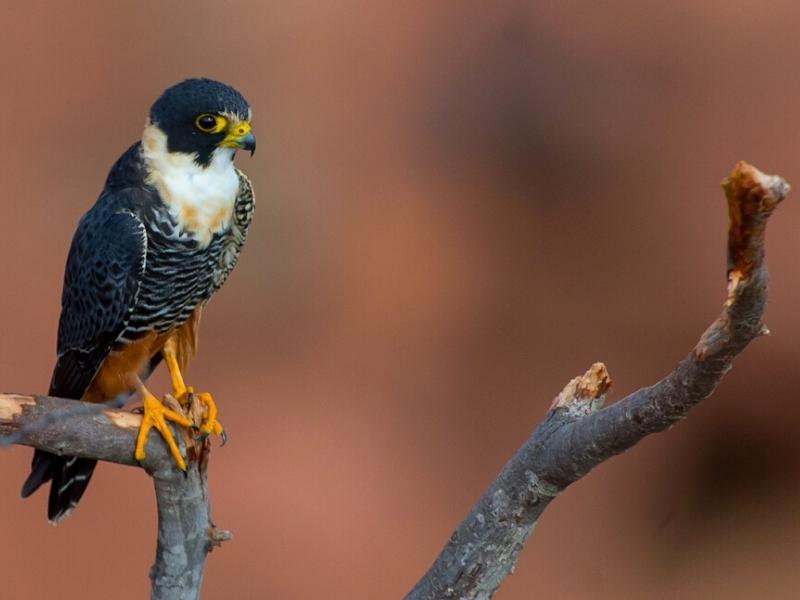
The Bat Falcon (Falco rufigularis) is a small, colorful falcon that lives at the edge of rainforests. You will see the Bat Falcon most commonly along the meandering, coffee-colored Tambopata River. It sometimes reveals its presence with a rapid series of notes similar to the sounds of the American Kestrel.
Bat Falcons prefer to spend their time at the edges of rivers to catch unwary birds and bats that happen to fly across the waterway. The unobstructed view and flying space favor the falcon and keep many birds from flying across the river. For this reason, small birds adapted to the forest understory rarely fly across a waterway as wide as the Tambopata.
The Bat Falcon gets its name from its ability to catch bats. It regularly takes bats at dawn and dusk. A hood to shade its eyes: Like many species of falcons, the Bat Falcon has a pattern on its head that somewhat resembles a hood. This pattern helps to shade its eyes from the glare of the sun. The long, pointed wings of Bat Falcons are an adaptation for a swift flight that helps them snatch fast flying birds and bats out of the air.

One of the most spectacular of the palm swamp residents is the Blue and Yellow Macaw (Ara ararauna). Blue-and-golds only nest in old palm swamps, such as the one at the Tambopata Park. When you arrive at the swamp boardwalk you will hear their screams right away.
The Blue and Yellow Macaw is one of the most photogenic birds that live in the Peruvian rainforest. Their bright blue upper parts combine perfectly with rich yellow underparts. They require both humid forest and palm swamps. They are fairly common where pristine tracts of these two types of habitat occur.
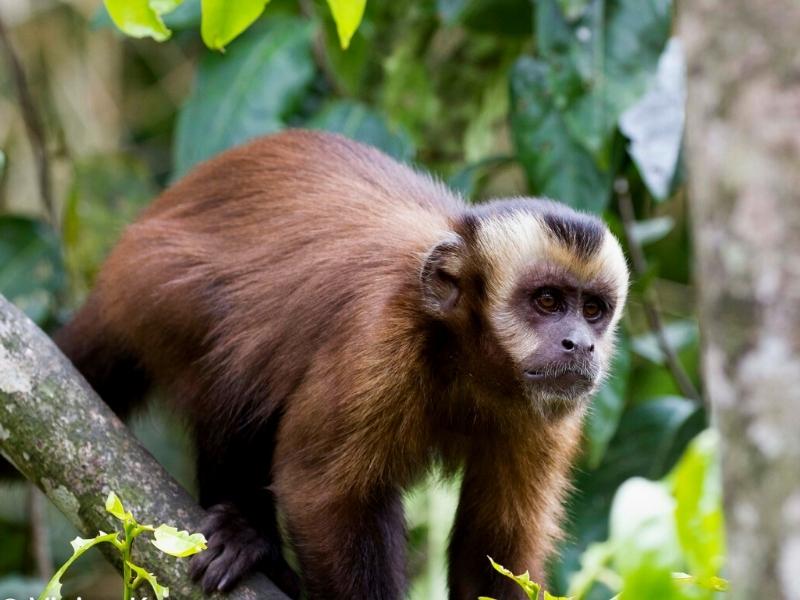
Brown capuchin monkeys are medium in size. Groups of ten or more individuals move through the sub-canopy of the rainforest in search of food. You will become fascinated by the human-like features on their faces as they inspect and probe the nooks and crannies of bamboo groves, bunches of palm nuts, and bromeliads.
This small to medium-sized monkey lives in much of the Amazon basin. They often forage with Squirrel Monkeys, You’ll often find the Brown Capuchin and the smaller Squirrel Monkey together in the Tambopata rainforests. While large numbers of Squirrel Monkeys scamper through the trees in their search for insect prey, smaller numbers of Brown Capuchins carry out more methodical searches for food in the jungle vegetation.
Brown Capuchins are omnivores, Like people, this medium-sized monkey eats meat, fruits, and vegetables. Unlike people, they eat just about anything they can catch including insects, lizards, and bird eggs. The Brown Capuchin and other Capuchin monkey species got their name by merit of their resemblance to the Brown-roped attire worn by Capuchin monks.
Brown Capuchin Monkeys use stones to break open hard rainforest nuts. After picking a palm nut, they allow it to dry for a few days or a week. Then they place it on a hard, fallen tree trunk and use a heavy stone to crack open the nut.
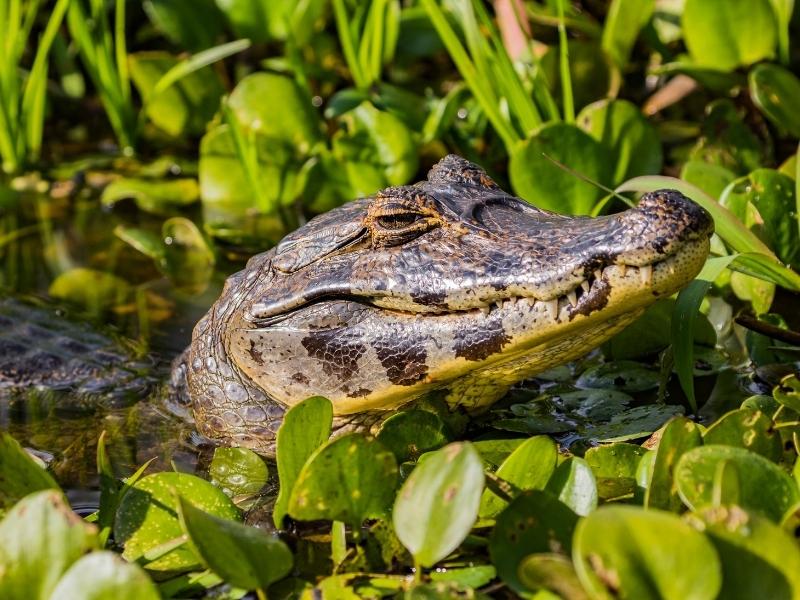
A caiman is a crocodilian related to the American Alligator. It lurks in the waterways of Central and South America. Of the 6 species of extant caimans, 4 occur in the rainforests of Tambopata, Peru. The smallest is the 3-foot long Dwarf Caiman (Paleosuchus palpebrosus). The largest is the intimidating, 15-foot long Black Caiman (Melanosuchus niger). Other species that occur in the Peruvian rainforest are the Spectacled Caiman (Caiman crocodiles) and the Smooth-fronted Caiman (Paleosuchus trigonatus).
Like other crocodilians, Caimans have been around for millions of years. They primarily feed upon insects, crustaceans, and fish. Large individuals, however, will eat mammals and birds when the opportunity presents itself. They get their name from the extinct Carib language word used for these neotropical crocodilians.
Black Caimans were hunted to extinction in many areas of their range. At present times, it mostly occurs in protected areas such as the Tambopata National Reserve.

Coasting along the Tambopata River on the way to our lodges, you travel through one of the most remote, biodiverse places on earth: the Amazon rainforest at its finest. As the boat moves along, the guides’ keen eyes watch the shore and treetops in search of jungle wildlife. If you’re lucky, you’ll spot the capybara, the largest rodent in the world!
Among the variety of riverbank wildlife, the Capybara is one of the most frequent sightings among our guests. This large rodent (Hydrochoerus hydrochaeris) hangs out at the edges of rivers and lakes in the Tambopata region. If you thought that Capybaras looked a bit like a squirrel or muskrat, this is no coincidence. These large animals are actually the biggest species of rodents in the world. In fact, these rather pig-like rodents can weigh up to 200 pounds!
You’ll never find a Capybara far from water. Their webbed feet have helped adapt these creatures to life in rivers, marshes, and lakes. The quirky rodents even sleep in the water, with their noses held just above the surface. Anacondas and jaguars love to eat plump, juicy Capybaras for dinner. The rodents must be tasty since other animals like Black Caimans and Ocelots also prey upon them.
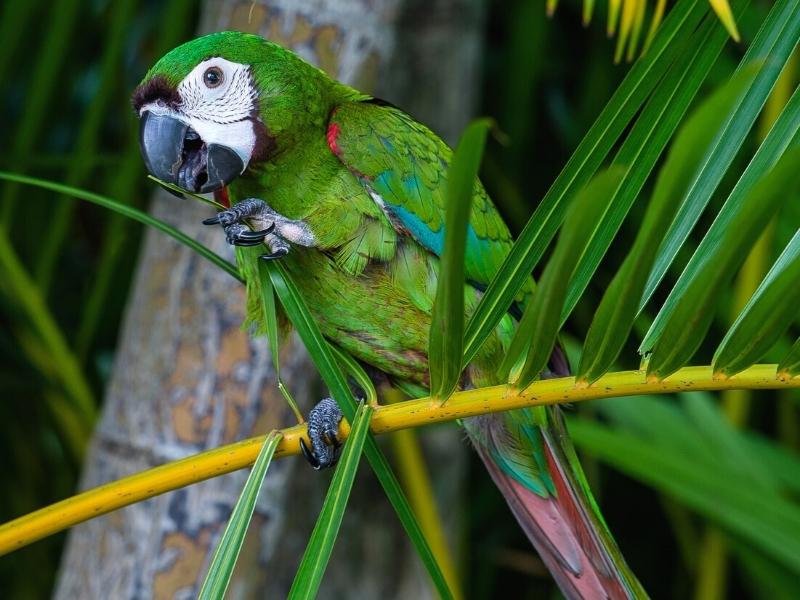
The Chestnut-fronted Macaw (Ara severa) is probably the most numerous macaw species in Tambopata. This is because their abundance is related to their preference for old second growth and riverine habitats. Thus, they persist in many areas near Puerto Maldonado. Also, they are common in the forests near the lodges.
Chestnut-fronted Macaws are smaller than the big macaws but just as colorful. The ornithologist who describes the bird gets to name it. However, the description is typically based on museum specimens of the bird in question. Therefore, many are named after aspects of their plumage that are more visible in a museum than out in the field. Such is the case with the Chestnut-fronted Macaw. While the chestnut-colored front of the bird is visible, it’s not as noticeable as its red, blue, and yellow wings, or the greenback.
It belongs to the same genus as some of the large macaws. However, many people call it a “mini-macaw”, much like the Red Bellied and Blued Headed Macaw.
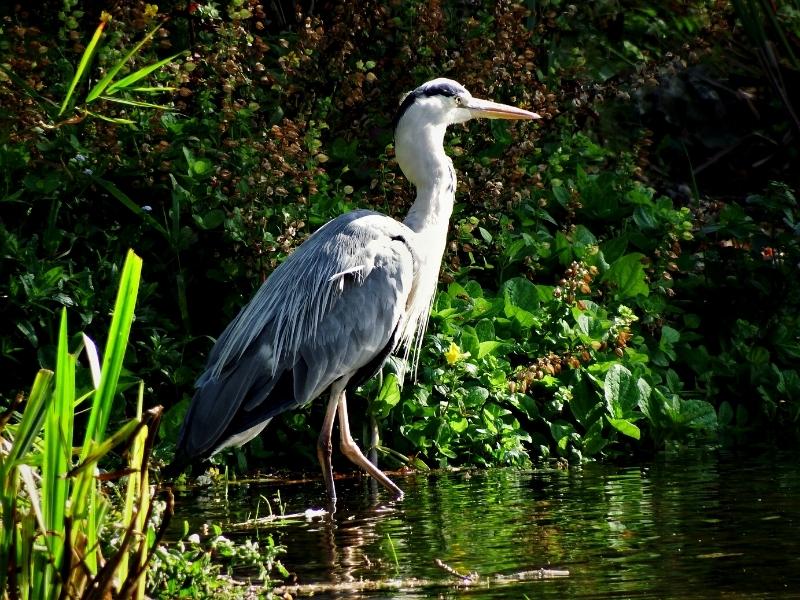
On the boat ride to our lodges in Tambopata Rainforest, the water is tranquil. But all around — beneath the surface and along the banks, the rainforest is full of life. You’ll likely spy the striking black, gray, and white Cocoi Heron, often called the White-Necked Heron.
Like other herons and egrets, the four-foot-tall Cocoi Heron spends the day wading in the shallows at the edges of rivers, oxbow lakes, and marshes. Patiently watching for fish, frogs, and other small animals, the Cocoi Heron catches them with a swift strike of its dagger-like bill. There are naturally low numbers of the Cocoi Heron. Despite this, however, most of our guests spot this beautiful waterbird! This is because the heron spends long amounts of time standing in open areas, making it easy to see.
The Cocoi Heron lives in Southeastern Peru, although some may migrate west up the Tambopata River from savanna habitats during the dry season. Like other herons, the Cocoi Heron nests in colonies, usually near large oxbow lakes. It has few natural predators, although Black Caimans, Anacondas, and big cats wouldn’t pass up the opportunity to catch one, given the chance!
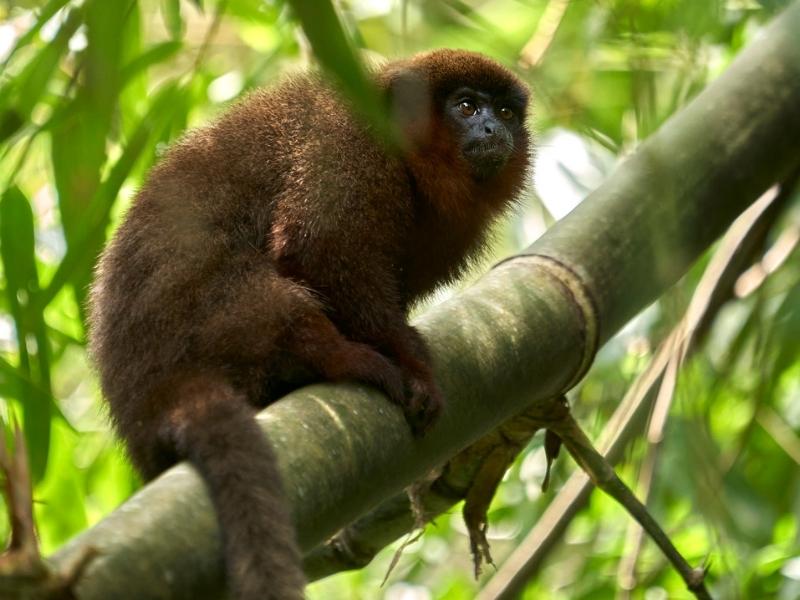
Both the male and female of this pint-sized monkey species call out each morning and afternoon to establish their territories. For such small primates they’re about the size of a squirrel!, they have quite a loud voice. Dusky Titi Monkeys are among the most populous monkeys in the Tambopata rainforest, and over two-thirds of our guests encounter them around our jungle hikes.
Unlike many other primates, Dusky Titis form strong pair bonds and mate for life. They’re typically seen with their mates and young offspring, so you can often spot an entire Titi family.
Dusky Titi monkeys mostly feed upon fruits, veggies, and other plants, although they will eat occasional insects. Large raptors like the Ornate Hawk-Eagle and the Crested Eagle hunt this tiny monkey, along with many of its primate relatives in the Peruvian Amazon. It avoids these predators by staying out of the treetops and trying to stay hidden in the dense vegetation of the forest understory.
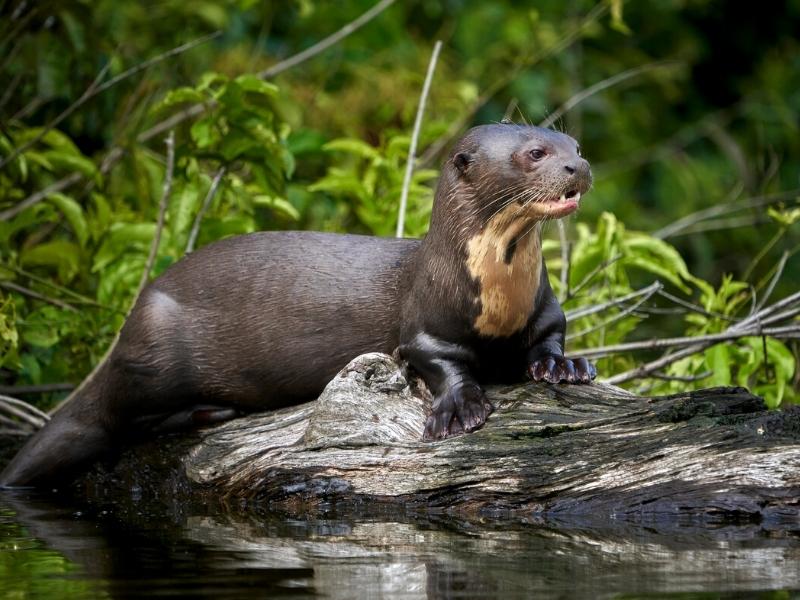
The incredible Giant River Otter is of the rarest creatures that live in Tambopata. Those who get the opportunity to observe this endangered creature (Pteronura brasiliensis) are very fortunate indeed. In fact, Tambopata is one of the only places on Earth where this fantastic, large mammal can be seen easily. When you visit the oxbow lakes near our lodges, you’ll get an unparalleled chance to view Giant River Otters. This thrill is the result of our cautious guides, who are dedicated to ensuring a peaceful, undisturbed habitat for these shy, beautiful animals.
Because of the size and the diet, Giant River Otters are top predators in the Amazon being the only competitors the black caiman, anacondas, or jaguar. Giant Otters feast on several species of Amazonian catfish and Characins. In fact, they eat around three kilograms of their body weight every single day! Giant river otters can eat piranhas.
Giant Otters live in extended family groups that can number from three to even twenty individuals. These family-loving animals spend most of their time together. Each Giant Otter is born with uniquely shaped and patterned patches of cream-colored fur on the throat. These beautiful markings can identify each individual animal.
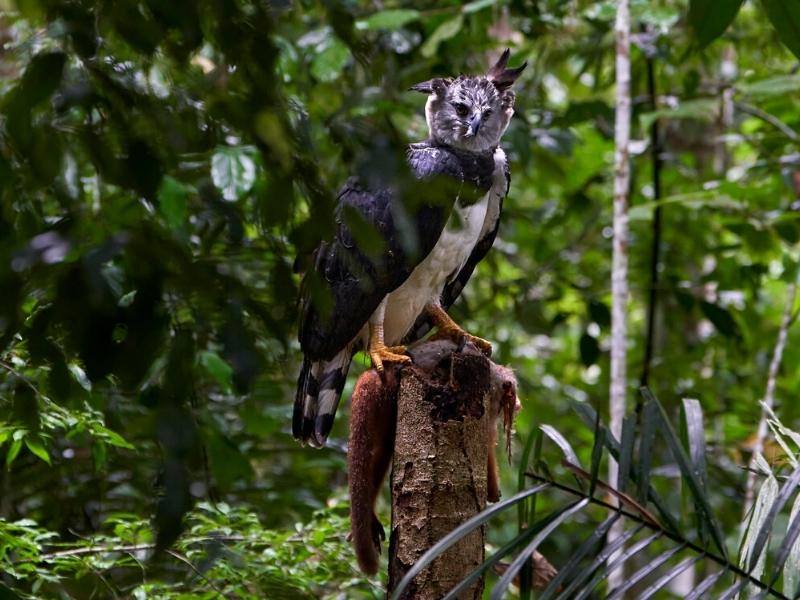
The Harpy Eagle (Harpia harpyja) is the largest raptor in the Amazon rainforest and one of the biggest eagles in the world. Although there are healthy populations of this majestic bird in the Peruvian rainforests of Tambopata, they are very difficult to see.
In the Amazon rainforest, Harpy Eagles share the top of the food chain with Jaguars and Anacondas. The Jaguar rules the forest floor, the Anaconda is king in swamps and lakes, and the Harpy Eagle dominates the canopy of the rainforest.
Harpy Eagles are commonly believed to solely prey upon sloths and monkeys. However, recent studies in Tambopata discovered that they catch and eat a variety of animals. They also take large birds such as toucans, kinkajous, and will even kill Brocket Deer!
Harpy Eagles look especially intimidating due to their huge, Grizzly Bear sized claws and massive beaks. The legs of the Harpy Eagle can also be nearly as thick as the wrist of a person! A wide-ranging, rare bird: This big eagle historically occurred in rainforests from southern Mexico all the way south to the Atlantic coast of Brazil. However, they need large tracts of animal-filled rainforest to survive and have thus disappeared from many areas of their range.
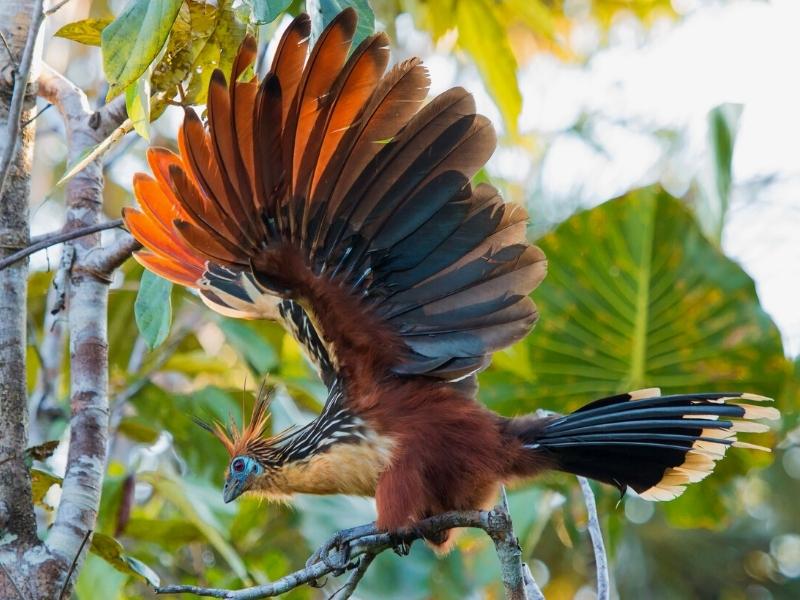
The strange Hoatzin (Opisthocomus hoazin) isn’t as pretty as toucans, tanagers, and macaws. In fact, it wins the prize for the oddest bird in the Amazon. The Hoatzin spends its time loafing around oxbow lakes in the Amazon rainforest nearly as large as a turkey. It sits in bushes and small trees that grow at the water’s edge and grunt. It nips off leaves from the surrounding vegetation. They don’t pay much attention to people. When scared, they clumsily flap their way to a nearby branch.
This strange bird only occurs in the Amazon jungle and has no close relatives. Indeed, its heritage is a constant subject of debate among ornithologists. It has been placed with cuckoos, turkey-like birds. It was even considered to be some type of ancient prehistoric bird. Studies have indicated that the Hoatzin is not a living fossil. It belongs to an old lineage of birds that may have no close relatives. One recent study of Hoatzin fossils showed that it may even have its origin in Africa and could have reached South America by floating across the Atlantic Ocean on clumps of vegetation.
The Hoatzin is one of the only primarily herbivorous birds on the globe. It rarely takes insect prey and spends most of its time picking out and eating succulent leaves from lakeside vegetation. Like cows, the Hoatzin uses bacteria to help digest the plant matter it consumes. It uses an enlarged crop for this purpose.
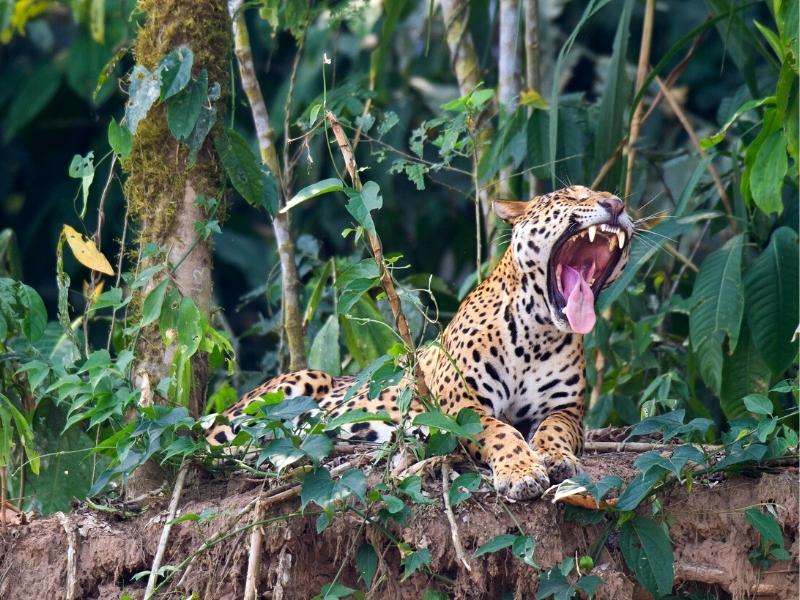
The Jaguar belongs to the same genus as the Tiger, Lion, Leopard, Snow Leopard, and Clouded Leopard. These species are the “big cats” and share a common ancestor. Jaguars have no qualms about taking to the water in pursuit of prey or when crossing a river. They will rush into wetlands to pursue capybaras or small caimans. You can even see them swimming across the Tambopata.
One of the ways to tell a Jaguar from the similar-looking Leopard is by the pattern on its coat. Jaguars have rosettes or distinct groupings of three or four dark markings that surround a smaller spot. Leopards, on the other hand, have spots.
Historically, jaguars ranged from the southeastern United States south throughout the neotropics to eastern Argentina. They quickly disappear from areas impacted by people. Furthermore, they are listed as Near Threatened by conservation authorities.
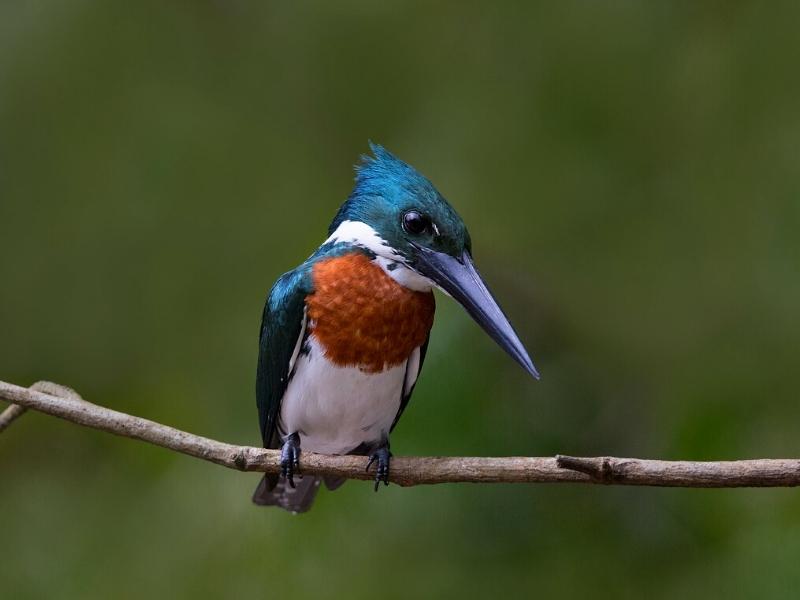
Traveling along the river never fails to turn up sightings of eye-catching rainforest wildlife. One of the bird species that you can sight on these boat rides is the Amazon Kingfisher (Chloroceryle amazona). Perched in riverside vegetation, they watch the water for fish and other aquatic prey. Kingfishers make their presence known as they give their rattling calls, zipping across the river on quick wings. This crested, jade green bird is found throughout the Amazon basin.
Like many other kingfishers, this species dives headfirst into the water to catch fish, crustaceans, and other small creatures with its dagger-like bill. The shape of the Amazon Kingfisher is incredibly adapted for aerodynamics. This bird has a pointed bill and head to lessen the resistance when diving.

The Mealy Parrot’s cackling, loud screeches are one of the most raucous sounds you hear at Tambopata Jungle. These large, green parrots (known as Amazona farinosa) are common residents of our Amazon Rainforest.
Just like other members of the parrot family, they have loud voices and love to use them! The Mealy Parrot’s screeches echo around our secluded lodges, and you’ll often spot the birds themselves as they fly past the canopy towers, or take clay from the clay licks (collpas).
The back and nape often have a whitish tinge. This makes the parrots look like they’re covered in flour or “meal,” which explains their name!. One of the largest parrots in the Amazon, in Tambopata, the only members of the Psittacidae family larger than the Mealy Parrot are the Scarlet, Blue and Yellow, and Red and Green Macaws.
Like other parrots, Mealy Parrots nest in tree cavities. As with macaws, the number of good nesting spots probably limits the whole population. You’ll often spy this large parrot feeding on the unripe fruits and seeds of various Amazonian trees.

Every time you take a hike in the Amazon, the rainforest’s unparalleled biodiversity guarantees you’ll spy strange and beautiful creatures. You can walk along the same trail every day for a week and see different critters every single time! One reason why you always see something different? Camouflage. Even staring at the same spot every day, some creatures hide in plain sight with their clever colors and patterns. The Morpho Butterfly is one of the most striking of these hidden gems!
Morpho Butterflies’ shining blue wings are caused by iridescence, as opposed to pigmentation. This means that they’re not really blue! Instead, their wings’ tiny scales reflect light in such a way that they often appear to be bright blue. Learn more about this effect here.
Morpho Butterflies’ ability to show near-holographic colors has inspired researchers trying to prevent counterfeiting! One security company imitated the butterfly’s unique wing structure to use on everything from banknotes to medicine.
Although the upper sides of Morpho wings are incredibly colorful, underneath is a brown pattern that blends in with the forest floor. This helps to conceal the butterfly from predators — it even tricks birds into biting the “eyes” on the wings as opposed to the actual body of the butterfly!
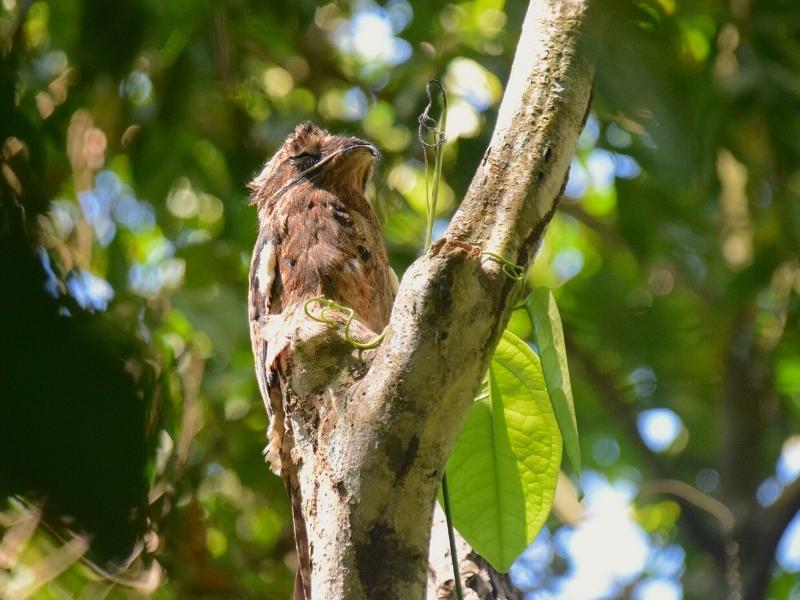
Not all nights in the Amazon are pitch black. When the full moon rises, it becomes light enough to see shadows inside the rainforest. On nights such as these, you barely need a flashlight in the clearings, and along the river shore. Certain birds also call more often during the full moon. Some of the strangest sounds, though, come from the Potoo Bird.
Bizarre, nocturnal birds that are rarely seen during the day, the Potoo Bird reveals its presence with eerie calls that carry for long distances. These unusual birds are a highlight in the Tambopata rainforest we call home.
Potoo Birds are only active at night, and thus sleep during the day. Like most other nocturnal birds, their plumage acts as camouflage, making them look like a piece of tree bark or broken-off stump!
Although Potoo Birds have small beaks, their mouths are huge. Their wide, largemouths help them catch moths, beetles, and other insects during the night. According to legend, the Common Potoo’s call is the mournful lament of a spirit in love with the distant spirit of the moon.

The Red and Green Macaw, along with its relatives in the Ara Genus, has a long pointed tail, a bare-looking face, and gaudy plumage. Its feathers are mainly a deep scarlet, with green highlights on the upper wings.
While you may notice that this brilliant bird looks a lot like the Scarlet Macaw, it doesn’t have the Scarlet Macaw’s yellow upper wing coverts. Another more subtle difference is the much larger head and the lack of black feather patterns in the head. These feather patterns are like fingerprints: every individual has a different pattern! Red and Green Macaws are one of the prized sightings of the Amazon.! You never get tired of seeing them, especially against a green backdrop from above the canopy tower at our lodges!
These trees are hardwoods from the Dypteryx genus. Until the 1990s there were healthy populations of ironwood because the wood was so hard that it destroyed chainsaws! But late in that decade, loggers learned to use a titanium alloy to cut ironwood trees. Now, there’s a crisis in many regions of the Amazon. Ironwood is exported to China for floorboards. Because of this, it’s disappearing close to rivers and roads outside of protected areas — bad news for the macaws.
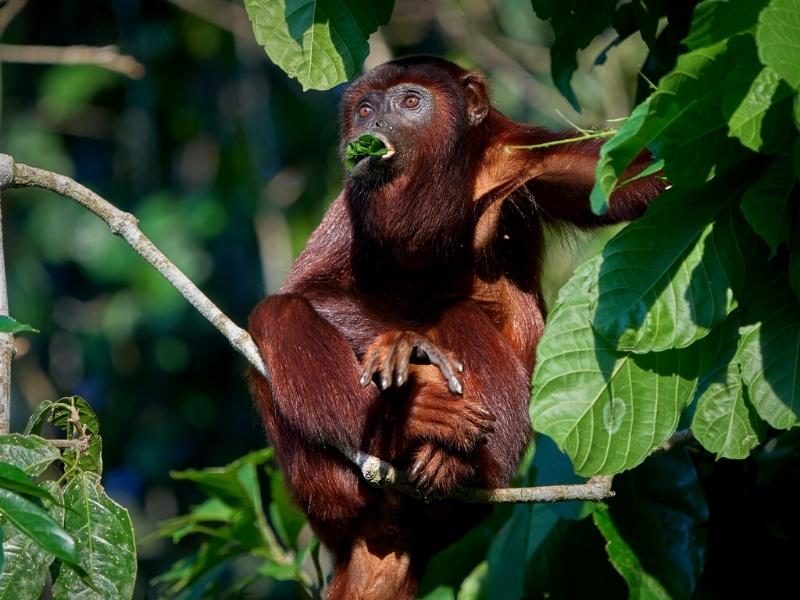
Red Howler Monkeys (Alouatta seniculus) are one of several primate species that make their home in the forests of Tambopata. Not as active as other monkeys, they tend to sit in their favorite tree, feasting on leaves for long hours. This monkey lives around all of our Amazonian eco-lodges, and many guests see them during their jungle tours.
The name of this primate species describes them well. They have reddish fur, and like all howler monkeys, are quite vocal. They make a windy, roaring noise created by a specially modified hyoid bone in their throats. The sound is so loud that it can carry for 20 miles! In fact, Howler monkeys are the loudest animals in the New World.
Like many monkeys in the Amazon, Red Howlers have a prehensile tail (able to grasp) to hold onto tree branches. This keeps them from falling to the forest floor. While color vision in most New World monkeys is restricted to females, both sexes of Red Howler Monkeys can see in color.
Social animals: Red Howler Monkeys usually live in groups of 10 to 15, each including a few males, several females, and young monkeys.
Vegetarian: Howler Monkeys are the only New World primates with a diet of mostly leaves. They also eat nuts, some fruits, and they occasionally snatch bird eggs.

Historically, you could find Scarlet Macaws all the way from eastern Mexico south to the Amazon rainforest. Unfortunately, they have disappeared from many areas. Lucky for us, they’re still fairly common in remote parts of the Amazon such as our Tambopata Reserve home.
Scarlet Macaws look quite a bit like the Red and Green Macaws. But they’re differentiated from their slightly heavier cousin by the yellow in their wings, their long wiggling tail, and their lack of face feathering. Scarlet Macaws also have smaller heads than their cousins.
These large birds require huge areas of forest with plenty of big trees for food and nesting sites. They eat a variety of seeds and fruits. Fairly few Scarlet Macaws in Tambopata nest each year. This is due to the lack of adequate nest sites. They require tree cavities of a certain size, which limits their population in the region.

This turtle species often have yellow spots on the head, and moves its head to the side, rather than straight back into its shell. It does this when predators threaten it. Like most turtle species, the Yellow-Spotted Side-Necked Turtle can live for several decades.
The IUCN Red List keeps track of animals in danger of extinction, or that appear to be headed in that direction. Despite the fact that many of our guests spot this lazy fellow, the turtle is “vulnerable,” one step away from being endangered! This is due to population declines in many other areas. As a result of humans over-harvesting its eggs and hunting adult turtles for food, this formerly abundant creature has disappeared from many areas.
On sunny days, this turtle species love to warm up by sitting on branches and logs that jut out of the river. They feel more protected in such spots because they can simply drop into the water if they feel threatened.

These limber primates are a favorite sighting for our guests. While they can be rare elsewhere. Spider monkeys are your prototypical primate. They have long limbs, longer tails, small heads, and are very acrobatic.
Spider Monkeys hang from their tails while eating fruit, and can leap from branch to branch in what seems like short bursts of flight! Their call is a sonorous yelp that sounds almost like a wail.
Wherever they live, these cheeky primates are hard to miss. Spider monkeys (Ateles chamek), the largest monkeys in the region, are great indicators of the quality of the forest. Because they’re large (about 10 kilos or 22 pounds), forage in the canopy (up to 35 meters or 115 feet), and they eat lots of fruit, they can only live on huge tracts of undisturbed primary forest. This makes them a sign of a healthy rainforest: forests, like our Tambopata home, with resident spider monkeys, are very healthy and biodiverse!
Black Spider Monkeys need to move between areas with patchy food resources like fruits and flowers. They do this in the high strata of lowland rainforests.

The Spix’s Guan (Penelope jacquacu) is an arboreal bird, a tree-dwelling bird with a similar size and shape to a turkey. The birds have a blue-ish or brown-ish speckled color, with a brilliant red dewlap (loose flap of skin around the chin). You’ll find Spix’s Guans throughout much of the Amazon basin. These funny birds are fairly common in the Tambopata region.
Although the Spix’s Guan isn’t necessarily nocturnal, this weird bird sometimes makes a frightening, yelling noise on moonlit nights. Spix’s Guans are common around our rainforest eco-lodges because hunting is prohibited in these protected areas. But in places with hunting, this large bird becomes an easy target and quickly disappears from such areas.
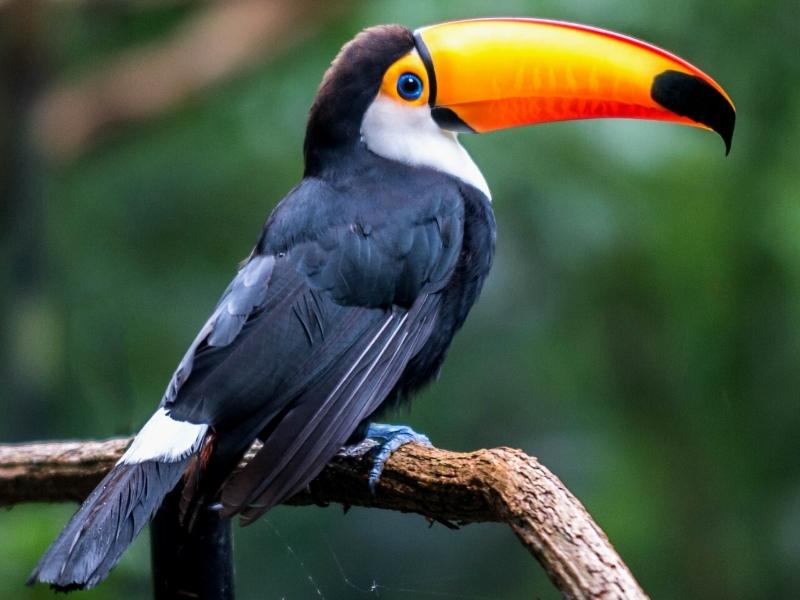
Medium to large-sized birds with huge bills, some say Toucans look like “flying bananas” when they take to the air. They glide between the treetops, adding color to the canopy with their bright black, white, red, and/or yellow feathers. Striking and exotic in appearance, toucans are an essential part of any Amazon rainforest adventure!
Most Toucan species forage in the rainforest canopy for fruits, insects, and lizards. They also take bird’s eggs and nestlings to snack on!
You’ll almost never see a Toucan all alone. Larger species and Toucanets usually stay in pairs or small groups, while smaller Aracari Toucans often troop through the forest in groups of about ten!. Male toucans have slightly larger bills than females. This difference is very apparent when you see a male and female together.
Most toucans stick to the treetops, hardly ever flying down into lower levels of the forest. They often perch on the tallest of canopy snags.
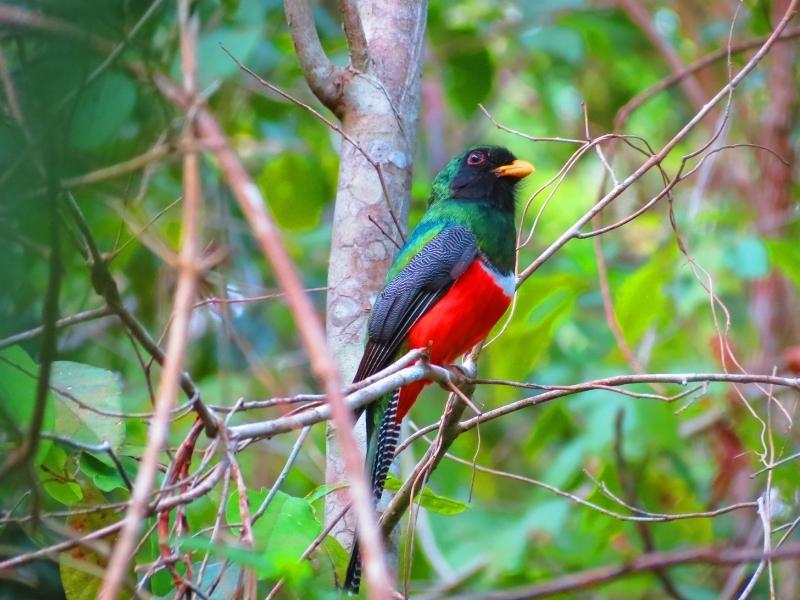
Trogons are medium-sized birds that live in tropical forests around the world. Most species sport iridescent feathers, combining hues like jade-green, purplish-blue, bright yellow, and crimson red. In Tambopata Park, six different species live in the treetop canopy. It’s common to spot the stately Black-tailed Trogon, White-tailed Trogon, Collared Trogon, and the small Blue-crowned Trogon on jungle hikes or canopy tower visits. But best of all, some visitors even spot the Pavonine Quetzal — the largest and rarest of Trogons in the region!
Trogons are mostly frugivorous, which means they eat fruits. But they can’t pluck fruits while perched, so instead, they hover in front of the fruit and pluck it in flight!. Trogons are the only type of animal that has heterodactyl toes. This means that their first and second toes point backward, while their other toes point forward!
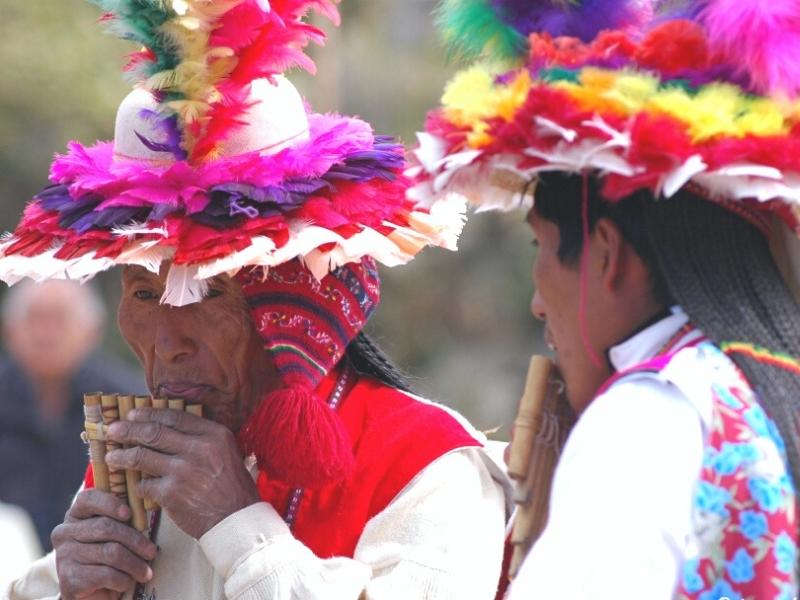
Sublime landscapes, wildlife, history, culture - Peru has more than its fair share. Its famed snow-capped Andean peaks shelter the temples and fortresses of the Inca and other pre-Columbian cultures, linked by a network of paved trails.

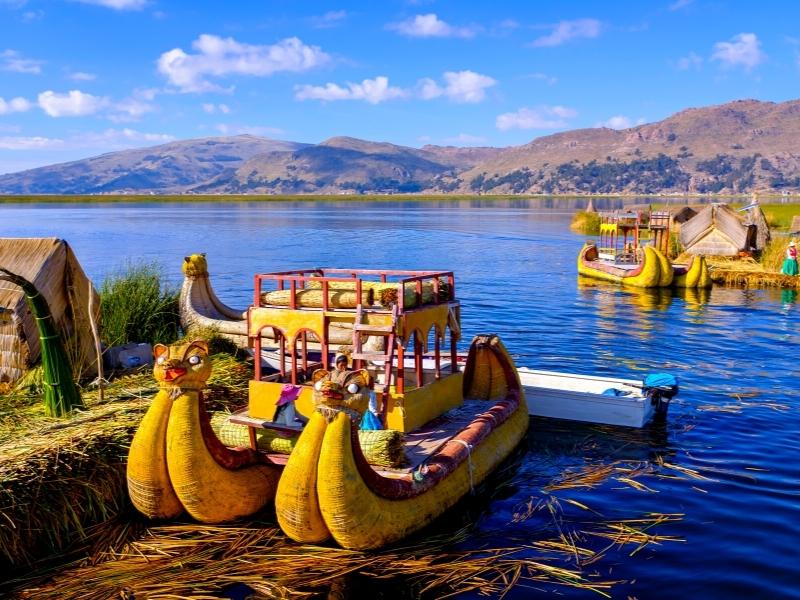
The wonders of Peru await you as you hike through the Manu Amazon rainforest, traverse the plains of the Sacred Valley of the Incas, and stroll the cobbled streets of Cusco on this 15-day trip from Lima. Search for monkeys and medicinal plants in the Amazon, travel the ancient road to Machu Picchu, experience a stay in a traditional community on the shores of serene Lake Titicaca.

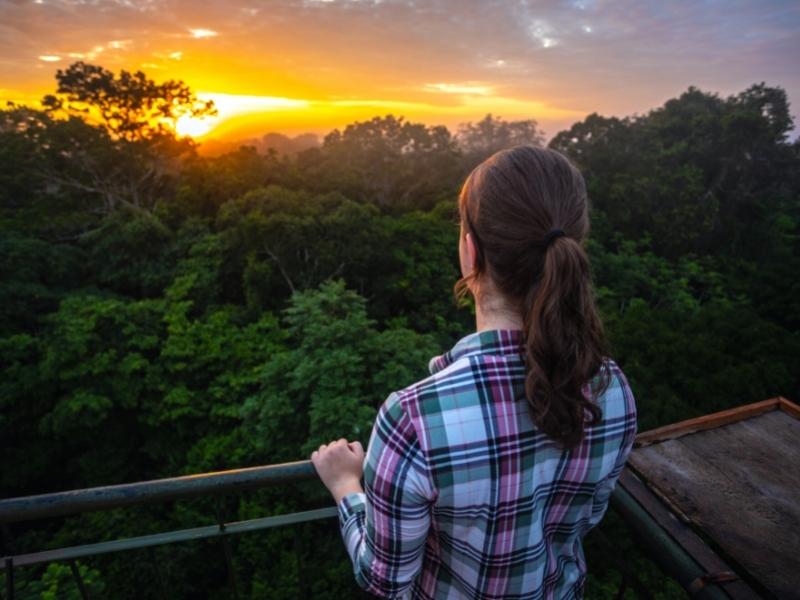
Dive deep into the culture and landscapes of Peru with this adventure to Machu Picchu, the Amazon and more. Search for wildlife along jungle trails and rivers in the rainforest from a comfortable lodge then head up into the Andes to Cusco, the capital of the Inca empire.


Enjoy the best vacations in Peru. Our Majestic Peru travel program will take you from the coast and its impressive Nazca lines, to the lodge in the Amazon forest surrounded by many wild fauna, you will travel the Inca trail to Machu Picchu, culminating your trip in Cusco.


The 3 Days Tambopata Adventure Tour is exclusively designed for those wanting to experience the best of Peruvian Amazon Rainforest in a short time. The Tambopata jungle adventure offers an insight to the culture and amazon wildlife.


Your journey to the Tambopata National Reserve offers a great opportunity to discover a lively biodiversity of birds, mammals, reptiles, insects and trees. Record-setting numbers of animal species are concentrated within small areas, and the variety of plant life is greater than almost anywhere in the world.
